Happy Batman Day, everyone! This weekend we celebrate the Dark Knight and everything that he stands for.
Looking at Batman, one can’t help but wonder about how we got here. Bruce Wayne isn’t the product of one incident or a single story. Our understanding of who Batman is as a character comes from a variety of moments that have built the hero into who he is and what he represents today. What are those moments? It would be impossible to list them all, but here are twelve that stand out as defining who exactly Batman has become for his millions of fans worldwide.
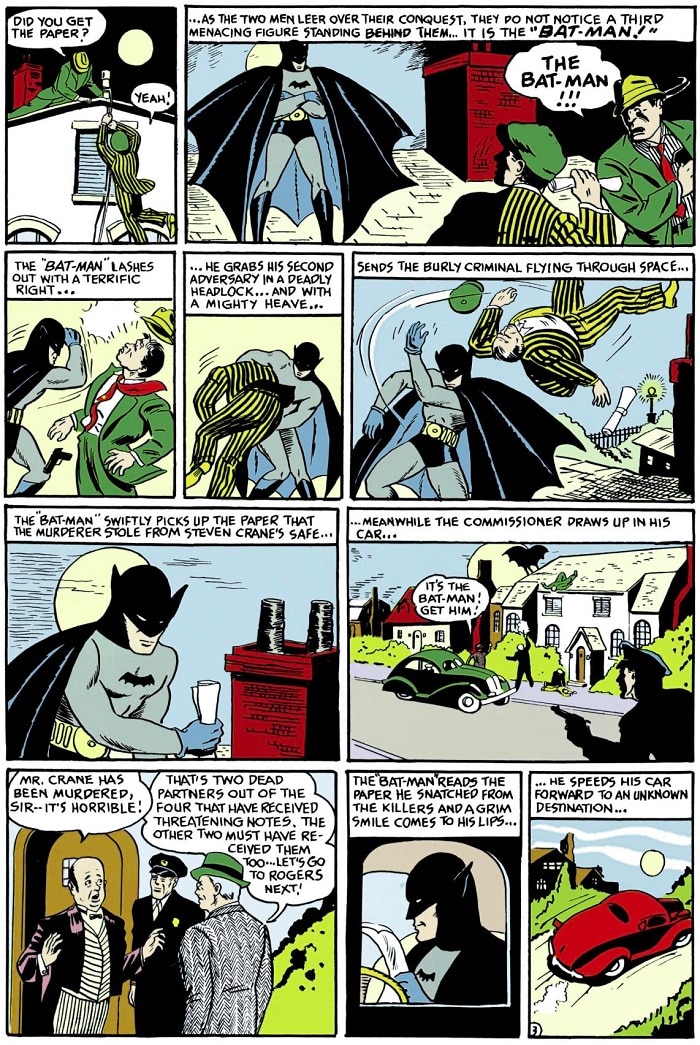
1) His First Appearance
“The Case of the Chemical Syndicate” is a six-page story published in 1939’s Detective Comics #27. The issue contained nine other stories, but none of them had the cultural impact that its cover story did. Why was that? It’s easy to see why people like Batman now, but what was it about these six pages that took root and grew to become one of the most popular superheroes ever created?
Inspired by Superman’s success, DC Comics (called National Publications at the time) commissioned more superhero stories, but rather than creating a copy of the Man of Steel, Bob Kane and Bill Finger sat down to craft a character that went in another direction.
Batman was a caped superhero, but he had no superpowers. He had more in common with pulp mystery men like the Shadow than he did with the Man of Steel. In this debut story, Batman operates as a creature of the night, evading the cops as he hunts for criminals. He’s a figure of mystery, who doesn’t have any dialogue until the final battle. It’s an unassuming beginning, but while some things have changed since this debut (fortunately DC quickly dropped the hyphen from “Bat-Man”), it’s amazing how much here still rings true to the core of who Batman is. “The Case of the Chemical Syndicate” may only be six pages, but Kane and Finger knocked every one of them out of the park.
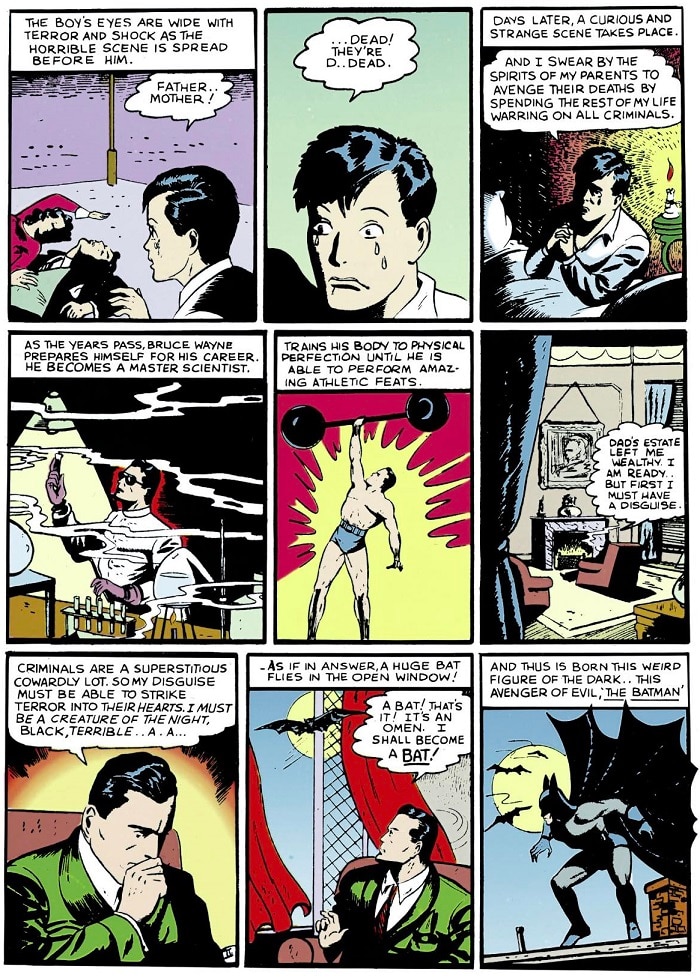
2) His Origin
Batman’s origin is such a large part of his DNA that it’s hard to believe he originally didn’t have one. Readers didn’t learn the Dark Knight’s backstory until 1939’s Detective Comics #33, which was his seventh appearance! At the time, comic heroes were largely pulp characters starring in disposable stories, so there wasn’t much thought given to their backstories.
The origin sequence here is only two pages long, but it establishes so much. We see the murder of Thomas and Martha Wayne, Bruce’s vow for justice, his training, and the moment he realized he must become a bat. Even the line “Criminals are a superstitious cowardly lot,” continues to be used in the Batman mythos today.
Over the years, the Dark Knight’s origin has been expanded upon by writers like Frank Miller and directors like Christopher Nolan, but it’s never strayed far from the original two-page story. This sequence explained so much about who Batman was, and what drove him to be a crimefighter, that it’s hard to imagine who he’d be without it.
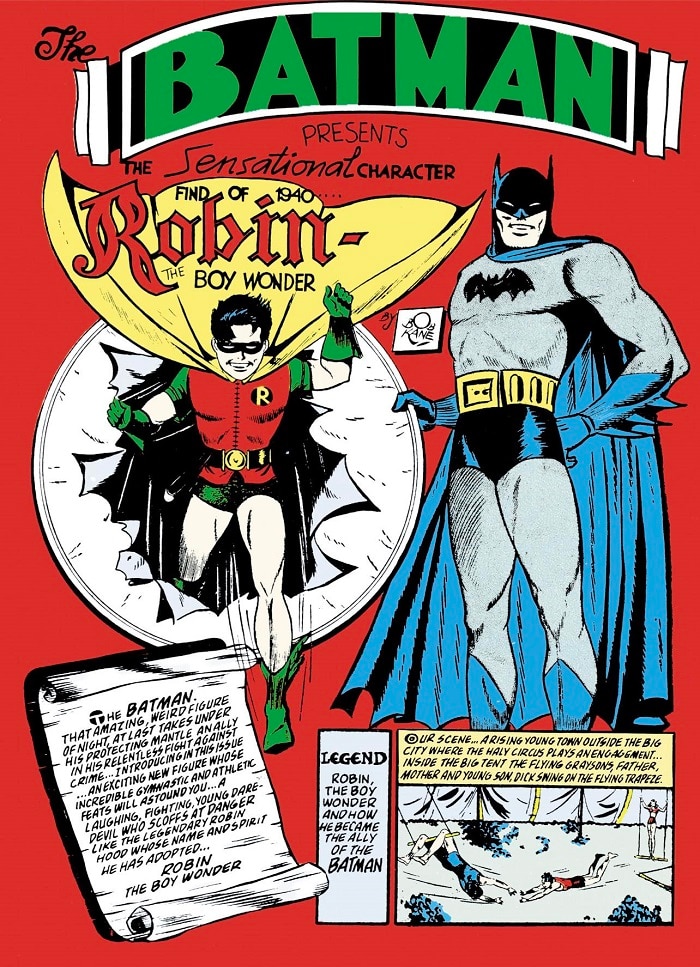
3) Batman Gets a Sidekick
It isn’t hyperbole to say that Robin changed everything. The cover to 1940’s Detective Comics #38 calls Dick Grayson, “the sensational character find of 1940,” but he’s so much more. This comic not only introduced the Boy Wonder, but it popularized the idea of superheroes having kid sidekicks. Today, Dick Grayson is one of DC’s premier heroes.
If you read Batman from the very beginning, you’ll notice a complete change in the series after the introduction of Robin. Young Dick Grayson helped the Dark Knight grow as a character, developing him into the strong mentor and father we know him as today. The Bat-Family is one of the most endearing parts of Batman’s mythology (just look at the mega-popular WEBTOON, Wayne Family Adventures), and Detective Comics #38 is truly where that family began.
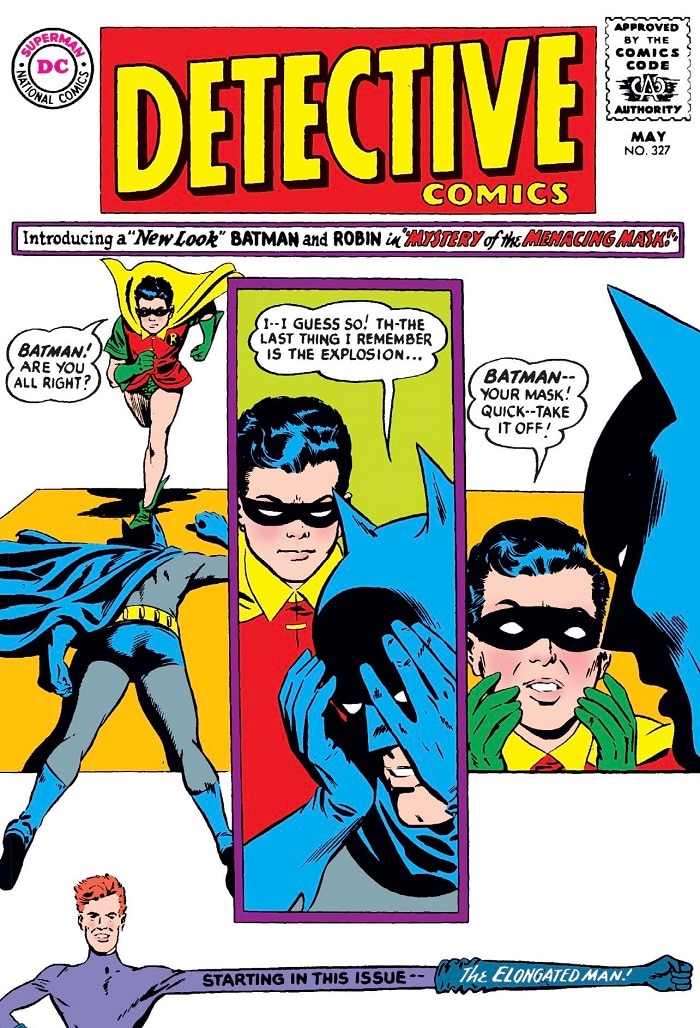
4) Batman Gets a New Look
By 1964, Batman had been starring in monthly comics for 25 years. The Caped Crusader’s adventures were still fun, but they weren’t as fresh. His stories had become formulaic, and sales weren’t as strong as they could have been. It’s almost unthinkable now, but Batman and Detective Comics were in danger of being cancelled altogether. If Batman were to be saved, it would require bold thinking and creative risk.
1964’s Detective Comics #327 was the beginning of a creative overhaul for Batman’s titles, known as the New Look era. Prior to then, Batman artists worked in a house style to mimic Bob Kane, but the New Look era allowed pencilers like Carmine Infantino to use their own distinct style. Batman’s costume was updated, adding the iconic yellow oval which has become recognizable around the globe.
The space aliens and science fiction villains of the 1950s were dropped, and classic villains like the Joker and Penguin began to appear more regularly. The New Look era brought Batman out of a creative malaise and breathed new life into the series. The comics looked dynamic and readers responded. Not only that, but it set the stage for a certain television series…
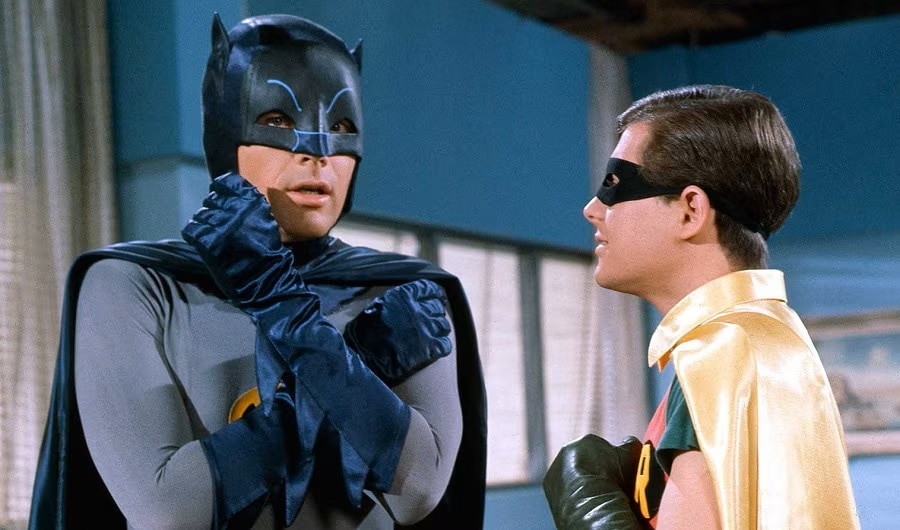
5) Adam West Ushers in Batmania
Bam! Sock! Pow! On January 12, 1966, audiences tuned into ABC to watch Adam West suit up as Batman for the first time. The small screen Batman took pop culture by storm, ushering in a global sensation known endearingly as “Batmania.” The ratings success of the television series led to Batman being ubiquitous for much of the late ’60s—you could find him on everything from water guns to novelty records.
The series was a campy sendup of the comic books, but it was fun. Adam West gave his performance 110%, giving some of the goofiest lines the most earnest deliveries. For an entire generation of fans, this was Batman.
Batman ran for three seasons and spawned a theatrical film, a short-lived animated series, a Batman ’66 comic book series and two full-length animated films set within the show’s continuity. It gave us the Barbara Gordon version of Batgirl and made villains like Joker, Penguin, Riddler and Catwoman into household names. It may have been a departure from Batman’s dark roots, but it demonstrated Batman’s potential outside the realm of comics and made him something entirely new at the time—a franchise character.
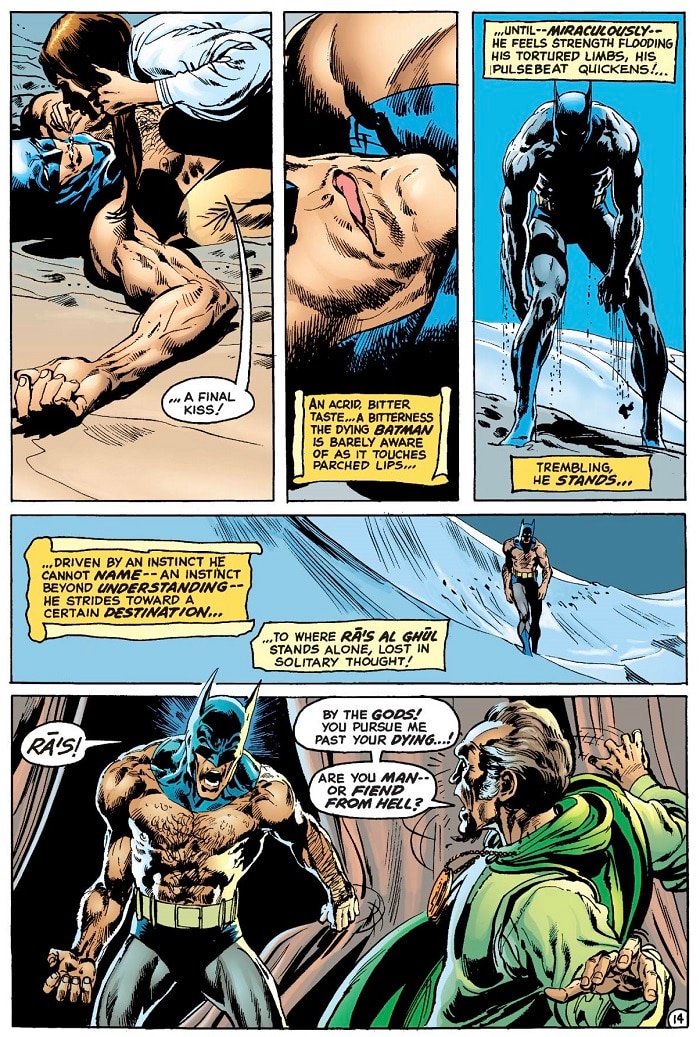
6) O’Neil and Adams Bring the Dark Knight Back to his Roots
Batman and Robin aren’t the only Dynamic Duo in Gotham. 1970’s Detective Comics #395 featured writer Denny O’Neil and artist Neal Adams’ first collaboration on a Batman story, beginning a run on both Batman and Detective Comics which would rock the Dark Knight’s world.
In order to fully appreciate O’Neil and Adams’ influence, one must look at the comics released before their run and those released after. Prior to their run, Gotham was a colorful place and Batman was a lighthearted character. Although the Adam West series had ended, the direction of the show was still reflected in the comics. And then O’Neil and Adams changed everything…
Adams illustrated Batman as a more foreboding figure, moving away from the tone of the Silver Age. O’Neil scripted stories that highlighted Batman’s detective skills and made Gotham a dangerous place once more. The duo created new villains to inhabit Batman’s world, including Man-Bat and Ra’s al Ghul. They also crafted classic stories, such as “The Joker’s Five-Way Revenge.” The Dark Knight was once again “dark,” and would remain so from then on.

7) The Dark Knight Returns
In 1986, DC Comics published The Dark Knight Returns, a four-issue limited series that challenged the conventions of superhero comics. Written and illustrated by Frank Miller, with inks by Klaus Janson, the story is set in a dystopian future where Gotham City is terrorized by a gang called the Mutants. An aged Bruce Wayne steps out of retirement to become the Dark Knight once more. This version of Batman is joined by Carrie Kelley, a 13-year-old girl who inherits the mantle of Robin.
The Dark Knight Returns was not only a turning point in Batman’s history, but for the entire comic book medium. The prestige limited series showed readers that comic books were a mature medium. Miller’s book was discussed in college classes, alongside the works of Mark Twain and Charles Dickens. People who had never picked up a comic before got curious and sales skyrocketed.
Miller’s influence continues to be felt to this day, with imagery and themes from the comic seen in movies such as The Dark Knight Rises and Batman v Superman: Dawn of Justice. Looks like there’s still plenty of life left for this old Batman.
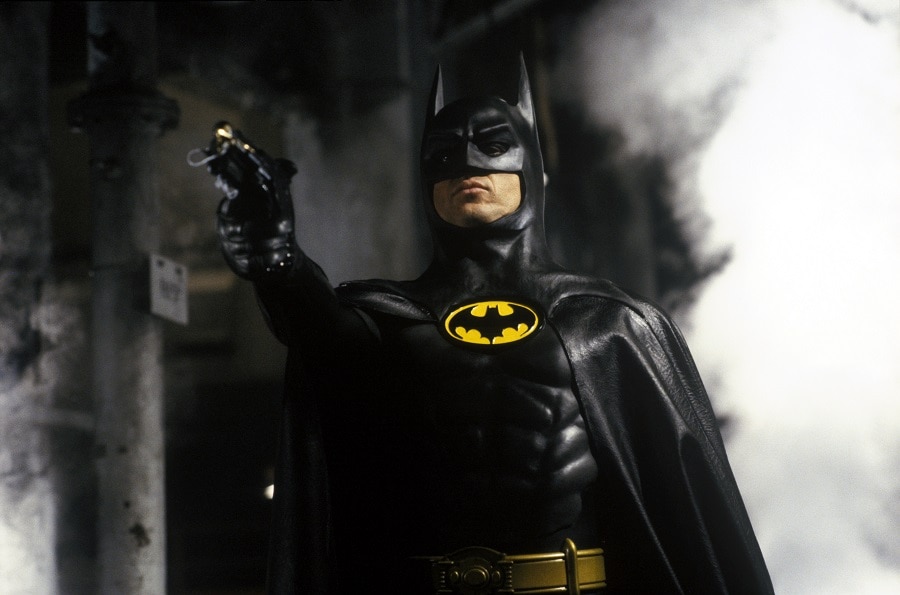
8) Michael Keaton Ushers in Batmania 2.0
Have you ever danced with the devil in the pale moonlight? If you were around in the summer of 1989, you sure did. Tim Burton’s Batman hit theaters like a juggernaut on June 23, 1989, ushering in a new, very different era of Batmania. The film starred Michael Keaton in the title role, who battled against Jack Nicholson’s Joker. Batman was a massive success, introducing millions of filmgoers—until then, mostly familiar with the character through the ’60s show—to exactly why Batman had long been called “the Dark Knight.” Gotham City looked intriguing, mysterious and dangerous, the batsuit looked phenomenal in live action (even if poor Keaton couldn’t turn his head), the Batmobile was stunning and those toys… We really were left wondering where he got them.
The other star of the film was the soundtrack. Prince’s upbeat songs added a fun flavor to the world of Gotham, and Danny Elfman’s score is iconic and unforgettable. Comic book movies may be plentiful today, but that wasn’t the case in 1989—and a HIT comic book movie was even rarer. The popularity of the film was a game-changer. Batman interest had never been higher, with the Dark Knight suddenly on everything from cereal, baseball caps, t-shirts, school supplies and much, much more.
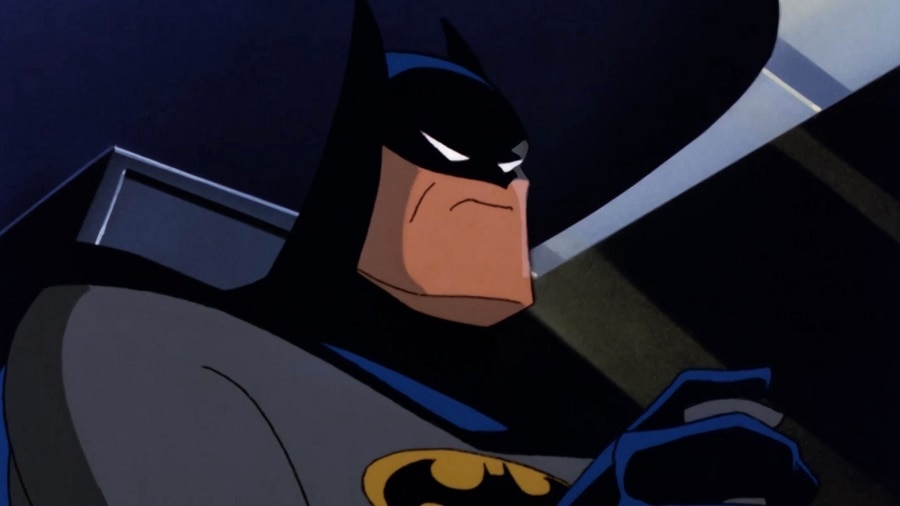
9) Batman: The Animated Series
Batman: The Animated Series premiered on Fox Kids in 1992, introducing a new generation of fans to the Dark Knight. After the success of Tim Burton’s Batman and Batman Returns, an animated series was the next logical step. However, rather than produce a cheaply animated tie-in, something that was very common at the time, Warner Bros. Animation created something that redefined the genre.
Batman: The Animated Series was heavily inspired by the Fleischer Superman cartoons as well as the Bronze Age Batman comics, particularly Denny O’Neil and Neal Adams’ pivotal run. Kevin Conroy voiced Batman, and his portrayal is so iconic, it’s become the default voice many comic readers hear in their heads while reading Batman’s dialog. Mark Hamill’s Joker is another standout, thanks to his memorable and maniacal performance. As a result of the show’s enduring success, both actors would reprise their roles for decades across animated films, video games and more.
Of course, we’d be remiss if we didn’t mention that the series also introduced Harley Quinn, the Joker’s then-girlfriend, who has become an iconic DC character in her own right. The success of the series inspired Warner Bros. Animation to produce follow-ups (such as Superman: The Animated Series, Batman Beyond and Justice League) set in the same continuity. Yes, the show was so good, it launched its own universe.
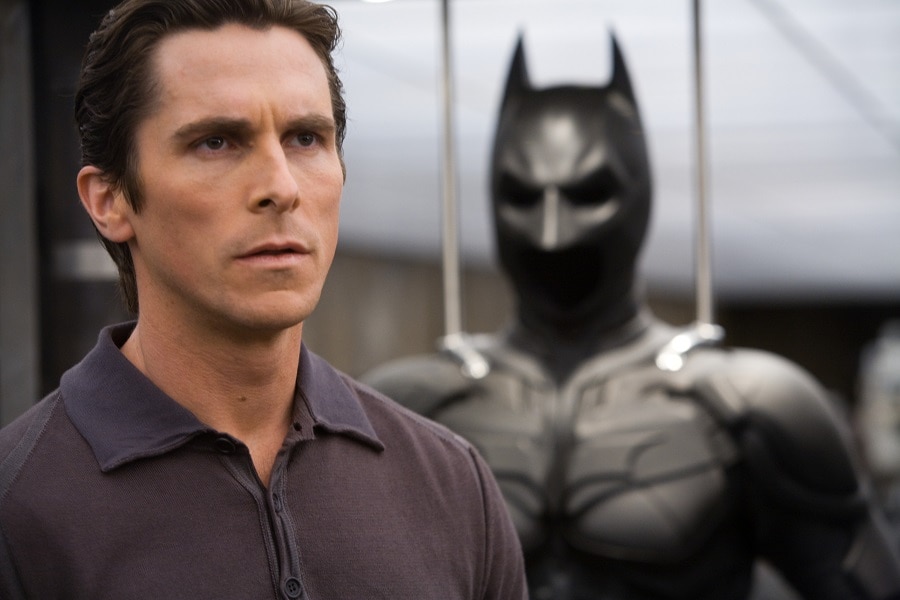
10) Nolan and Bale Help the Dark Knight Rise
In 2005, Warner Bros. released Batman Begins, the first chapter of Christopher Nolan’s critically acclaimed Dark Knight trilogy. Nolan’s film took heavy inspiration from Frank Miller’s Batman: Year One and The Dark Knight Returns, telling a grounded story that deconstructed Batman. Christian Bale took on the role of Bruce Wayne and his alter-ego, delivering a performance that captured the character’s pain and thirst for justice.
The Dark Knight followed in 2008 and The Dark Knight Rises concluded the trilogy in 2012. For the first time, a series of films was able to tell a complete story of Batman’s career, from his tragic origin to his final adventure. The Dark Knight trilogy received numerous awards, including a posthumous Best Supporting Actor Academy Award for Heath Ledger’s performance as the Joker.
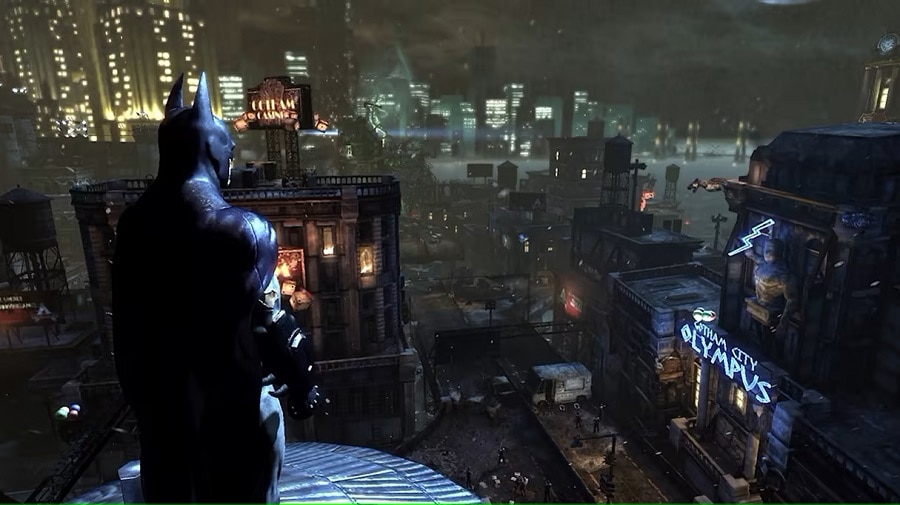
11) The Arkham Series Makes Batman a Video Game Star
Since his debut in 1939, fans have imagined what it would be like to be Batman. In 2009, they finally got a good idea. That year, Rocksteady Studios released Batman: Arkham Asylum, a video game that put players in Batman’s shoes as he explored the halls of Arkham. It was a massive success, both critically and commercially, embracing everything that Bat-fans loved about the character. Batman: Arkham Asylum offered up deep-cut supporting characters and villains, a fan-beloved voice cast that included Batman: The Animated Series’ Conroy, Hamill and Arleen Sorkin, and a thrilling new continuity that proved to be friendly to players unfamiliar with the Dark Knight’s world.
To be fair, Arkham Asylum wasn’t the first Batman video game, but it was the first to come across as more than a simple, uninspired tie-in. For example, the Dark Knight didn’t just punch and kick his enemies the way he did in previous games. The gameplay utilized Batman’s unique stealth style, allowing players to silently take down enemies. Strategy was key, and each battle was different.
Players used Batman’s detective skills to hunt for clues and advance through the game, and were rewarded by a rich, at times frightening story written by legendary Bat-scribe Paul Dini. The game was so successful that it too launched its own universe—the Arkhamverse, a series of video games (Arkham City, Arkham Knight and more, including the upcoming Suicide Squad: Kill the Justice League) and comic books (Batman: Arkham Unhinged and Batman: Arkham Origins, as just a couple examples).
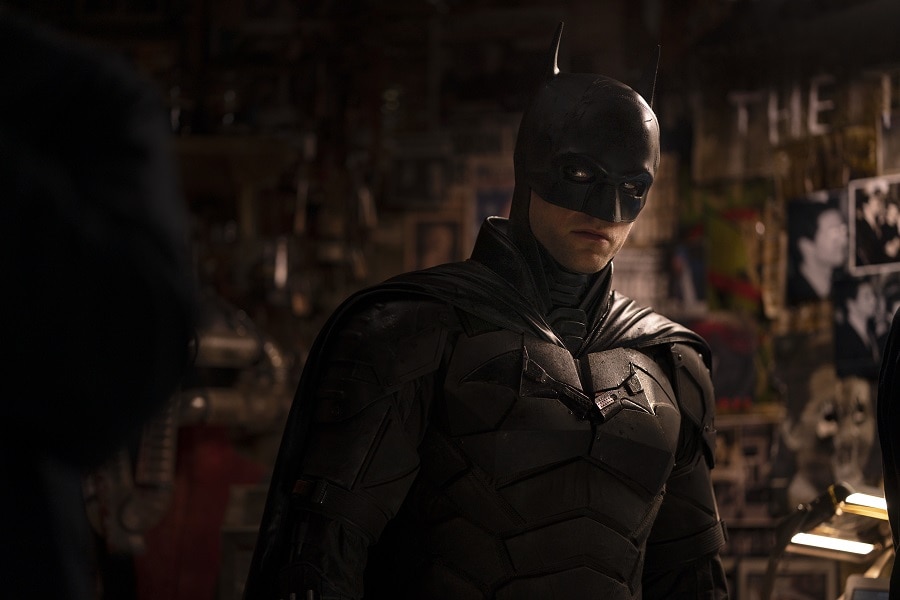
12) Matt Reeves Offers a New Vision of The Batman
In 2022, Robert Pattinson became the latest actor to portray Batman on the big screen. The Batman, directed by Matt Reeves, was a grounded, gritty detective story, taking inspiration from classic comics like The Long Halloween. The Batman took a “back to basics” approach, minimizing the use of gadgets and fantastical elements. The story was set during the early days of Batman’s career, when the vigilante was still making mistakes and learning his way.
Zoe Kravitz starred opposite Pattinson as Selina Kyle, and the chemistry between them was undeniable. Their Bat/Cat romance was every bit as steamy and complicated as it is in the comics. Paul Dano’s Riddler turned a jokey, gimmicky comic book villain into one of the most terrifying serial killers brought to screen, while Colin Farrell’s Penguin managed to come across as both dangerous and also surprisingly sympathetic. (His story is far from done and will continue in an upcoming spinoff series on Max.)
Every live action Batman reinvents the character, but rarely do we get one that so adeptly balances the bleakness of Gotham City and the pain of its hero with the unwavering feeling of hope that drives him. Considering this movie is inspiring plenty of just that when it comes Batman’s big screen future, that seems only fitting.
As we celebrate Batman Day, fans can’t help but wonder what the Dark Knight’s next twelve defining moments will be. What will be the next comic book classic or cinematic masterpiece? Or perhaps, like with the Arkham games, Batman will make his mark on an exciting new medium. The one thing we can say for sure is that there will be more defining moments in the future. The Dark Knight may have a storied past behind him, but as long as there are people suffering in the world and look to entertainment for inspiration, the Bat-Signal will continue to shine bright.
Batman Day is this weekend! Be sure to visit our Batman Day hub page for videos, news and activities to help you celebrate the Dark Knight’s big day.
Joshua Lapin-Bertone writes about TV, movies and comics for DC.com, is a regular contributor to the Couch Club and writes our monthly Batman column, "Gotham Gazette." Follow him on Twitter at @TBUJosh.
NOTE: The views and opinions expressed in this feature are solely those of Joshua Lapin-Bertone and do not necessarily reflect those of DC Entertainment or Warner Bros., nor should they be read as confirmation or denial of future DC plans.




















